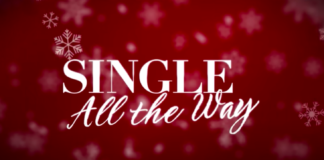
“Employees shall work together to increase their individual and collective capacity to effectively teach an equitably diverse and changing student population.”
– Albuquerque Public School’s Equity and Diversity page
Statements like this suggest APS is dedicated to providing students with a high-quality education that meets their diverse needs. However, the district does not contribute enough to this effort. In fact, APS fails to acknowledge an important population of students in one of its most vital educational curricula, sexual education. This is despite the fact that this population, according to a New Mexico Department of Health report, is three times more likely to be victims of sexual assault and experience dating violence.
This population is APS’ lesbian, gay, bi-sexual, transgender, queer, intersex, and other non-heterosexual/cisgender students (LGBTQ+). APS does not require LGBTQ+ identities to be discussed in its schools’ sexual education classes. The district’s Human Sexuality and AIDS Instructional Guidelines do encourage schools to provide accurate and unbiased information. However, the guidelines do not specifically encourage nor require them to develop curriculums that cover LGBTQ+ topics. This does not mean the district curriculum is completely exclusive. In an interview, two APS high school health teachers stated they are not required to teach inclusive sex-ed but are provided training and allowed to teach about LGBTQ+ topics left out in educational standards. The problem, however, is that school cultures vary, and as it stands, LGBTQ+ students do or do not receive the sex-ed they need depending on their academic community. And yes, inclusive sex-ed is a need. A 2020 Journal for School Health research study suggests that to combat high rates of sexual and relational violence, schools must provide sexual education that reduces LGBTQ+ stigma, creates a deeper understanding of gender identity and sexual orientation, and incorporates examples of healthy LGBTQ+ relationships. Without such a curriculum, LGBTQ+ students look to other sources, healthy or not, to teach them.
However, inclusive sex-ed is not just for LGBTQ+ students but is essential for non-LGBTQ+ peers, especially peers with anti-LGBTQ+ biases or who participate in LGBTQ+ targeted bullying. According to a Children, Youth and Families Department resource guide, lesbian, gay, and bisexual students are bullied twice as much as their non-LGBTQ+ peers. Half of these students report feeling unsafe at school, and 15% report missing school each month out of fear. With American’s long anti-LGBTQ+ history and the current wave of anti-transgender legislation, it is not surprising some students are misled into committing orientation and gender-based harassment. However, APS can do more to ensure its school environment is safer by teaching non-LGBTQ+ students about their diverse peers.
Some are concerned that inclusive sex-ed confuses youth or is too obscene, but children from a young age decipher their gender identity and determine who they consider attractive. Age-appropriate inclusive sex-ed will not create confusion but rather give youth the words they need to name their experiences. Inclusive sex-ed is also no more descriptive than any other comprehensive sexual education curriculum. The curriculum simply states the facts, and the fact is that LGBTQ+ students exist and deserve relevant sexual education. It is time for APS to contribute more to equitable education by including LGBTQ+ topics in its instructional guidelines and mandating inclusive sex-ed be taught in its schools.








